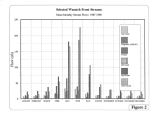| OCR Text |
Show Salt Lake City Watershed Management Plan ' 99 resorts. Under the goal of protecting the watershed resource, the Forest Service is committed to conducting water quality analysis in wilderness areas on municipal watersheds and to enforce a prohibition of camping within 200 feet of any water source in Big and Little Cottonwood Canyons. The Forest Service manages Red Butte Canyon as a Research Natural Area ( RNA). Red Butte Canyon has been closed to the general public and to livestock grazing since the early 1910s. In 1969, jurisdiction for Red Butte Canyon was transferred from the U. S. Army to the Forest Service. The management area has a high research value since it is a pristine example of a watershed. No uses are allowed that would diminish the natural values of the canyon. Uses are currently limited to research, study, observations, monitoring, and educational activities that are non- destructive, non- manipulative, and maintain unmodified conditions. The Red Butte Canyon Steering Cornmittee maintains a liaison among interested management agencies including the Wasatch- Cache National Forest, U. S. Army, Utah Division of Wildlife Resources, University of Utah, U. S. Geologic Survey, and the Intermountain Forest and Range Experiment Station. Grazing of livestock is currently permitted in the Wasatch Canyons on a very limited basis. The Forest Service honors existing grazing permits, but no new permits will be issued as a measure to protect the watershed environment. The Forest Service is working toward phasing out grazing in the canyons. The 1985 Wasatch- Cache National Forest Land and Resource Management Plan established the goal to protect the watershed in order to successfully accomplish Forest Service programs mandated by congressional actions and executive orders. Under the provisions of the Organic Administration Act ( 1897), the Forest Service is charged with " securing favorable conditions of water flows/' This language has been interpreted by Forest Service hydrologists as the minimum stream flows necessary to provide for the self- maintenance of stream systems. The Forest Service Channel Maintenance Program is intended to secure rising and receding flows, which produces a smooth transition between peak and base flows. This circumvents flood discharges and minimizes channel erosion and sediment deposition associated with instability or disequilibrium conditions. Flow maintenance is further intended to reduce the threat of channel aggregation, channel erosion, flood plain Page 37 |




















































































































































































































